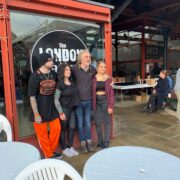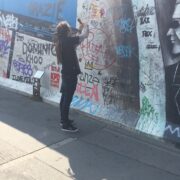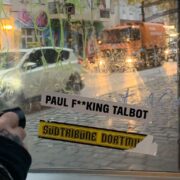During Lockdown I’ve been watching some livestream tattoo discussion panels. They are pretty freeform and chat based. Mostly around a chosen central theme. During one of these someone referred to tattooing as a service industry and I thought ‘hang on, no we’re not’. We’re selling art for money and that’s not a service! Yes, we do offer good customer service but that doesn’t mean that we’re a service based industry. In fact I think this misunderstanding is one of the many problems facing tattooists right now.
From the beginning of our artistic journey, we’re taught to strive for perfection. To achieve this, we need to have flawless technique, and unmatchable skills. But talk to career artist. They’ll tell you that – when it comes to selling art – the key to getting clients isn’t artistic perfection. — it’s artistic expression. That it’s far better to be a one-of-a-kind voice that shocks, provokes, screams, jokes and wows — even if that voice is a little messy at times.
If we put ourselves in the service industry – as artists – our portfolio is at the mercy of our clients. We will be forced to constantly regurgitate the same old tired designs until our clients (not us) decide to move on to something else. The tattoo scene will be governed not the best art but by the most popular.
Sound familiar? If you’re sick of clients bringing in the same old designs off the inter webs every day then maybe you should stop offering your services as a tradesman and try a non-service industry based approach to tattooing.
You could be selling art for money.
Speaking in your own voice is the smartest thing you can do to distinguish yourself from the crowd. And let’s be honest, it’s much more fun. Imagine if Pablo Picasso had crowd sourced his art or Led Zeppelin their albums. Creating only works that were the best by popular consensus, do you really think that we would have the incredible bodies of work by these artists if they had? Or do you, like I, think it would have been a very different and distinctly more vanilla flavoured affair?
Or imagine going to a gallery to buy a painting, finding one you love – a bowl of bananas – and then asking the artist to change the fruit because your grandmother recently died and she loved apples. You would politely (hopefully ) be told that it is impossible and you either take the painting ‘as is’ or attempt to commission the artist to paint what you want for a much higher price.
The historical way of getting a tattoo and the foundation of our industry is – in fact – very different to the TV version of it. you simply walked into a shop, picked a design that would be a suitable memorial for dear old gran, sat down and got it done. There was nothing wrong with it then and there’s nothing wrong with it now.
You bought art for money.
The current fascination among clients seems to be one of ‘personalising’ their tattoos with times, dates, places and all manor of things that have more in common with info graphics than actual art. Many of them seem to believe that this is the way it’s always been when – in fact – it’s only been a thing since the first tattoo TV programs. This is mainly because tattooing is (largely) a boring process to film with lots of heads getting in the way of shots etc and something need to be done to fill the dead airtime. So someone came up with the idea of interviewing the clients and asking them ‘why are you getting the tattoo?’
To create more interesting TV the execs simply picked increasingly bizarre people with increasingly bizarre reasons as the seasons went on. So in season 1 it was ‘I nearly died so I’m getting a skull’ but by season 5 it had spiralled down into ‘I saw the face go Jesus in a grilled cheese sandwich so I’m getting a grilled cheese sandwich’. The reason has become the subject and clients are perpetuating the vehicle created – not by the tattoo industry – but by the TV execs.
Be unique. Ask Unique Questions.
My question is simple. Why ask for the same when we – as a industry – are dying to create uniqueness just for you? As creatives we are supposed to push the boundaries of every new medium, and define the new cliches it’s what we do and what we love and were pretty bloody good at it if you bother to pick up a few magazines and take a look at what we’re really capable of.
So, in the face of this, why try to create an amazing piece of artwork or theme yourself by cobbling together some greeting card level images and popular internet memes? Because neither are concepts or even unique. When you could let your artist create something amazing for you that no-one else has.
The fact that there are currently over 665,000 ‘clock and rose’ designs on google should tell you that what was a nice idea has now descended into cliche just like those flocks and flocks of silhouetted birds did last year.









